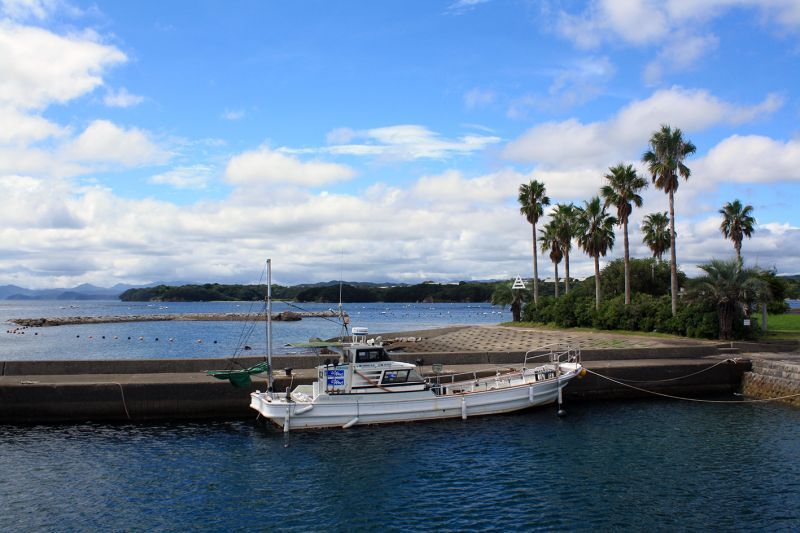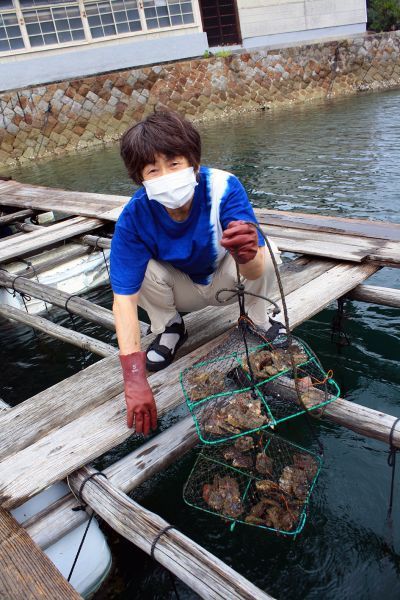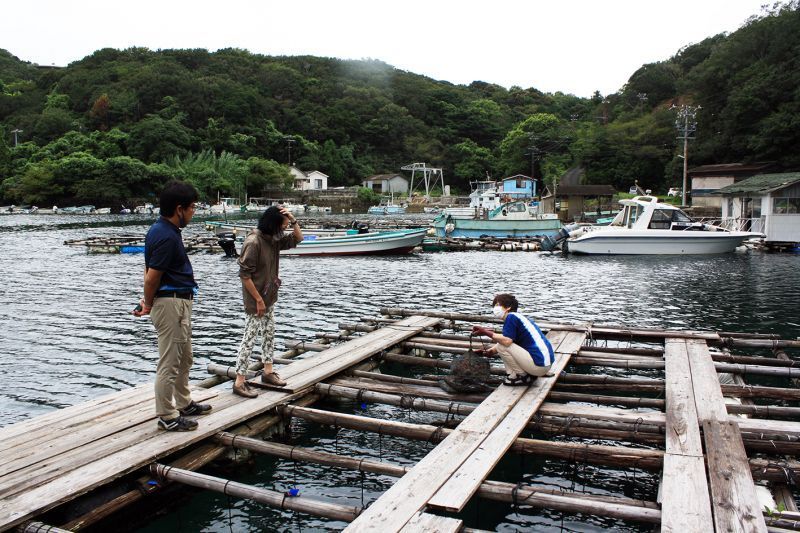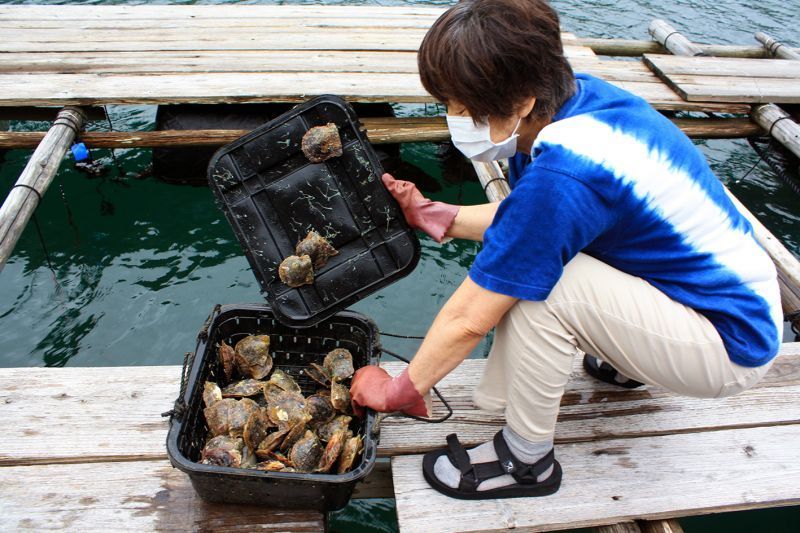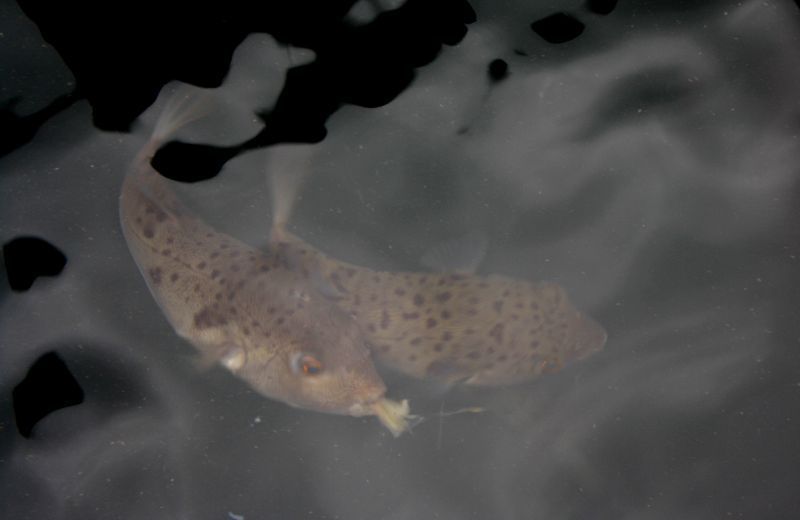Fully enjoying Ama divers’ hometown “Pearl Farm Visit & Making traditional Japanese Sandals” - Learn About Akoya Oyster Farming and Make Beautiful Pearl Keepsakes

Ise-shima is home to the Japanese cultured pearl industry that was started by Kokichi Mikimoto at the end of the 19th century. The spectacular coastal waters of Mie near Ise-Shima are dotted with islands that provide a perfect environment for the numerous Akoya oyster farms operating in the area today. Participants in the Fully enjoying Ama divers’ hometown “ Pearl Farm Visit & Making traditional Japanese Sandals ” experience will learn about traditional harvesting and make their own accessories using the luminous pearls. This experience is available April to December and costs ¥25,000-34,000 per person, depending on the group size. The start time is 1:00 PM and the entire experience takes about four hours.
Written by Vern Begg
About the Author:
Trying new experiences and meeting people is what drives my passion for traveling. In Japan, there is always something new to try and the friendly nature of Japanese people ensures that these opportunities will be fun and educational. I especially enjoy being outside and doing activities that involve nature.
The natural beauty of Ise-Shima is breathtaking and from the right vantage point, you can see dozens of small islands in the quiet waters off of the coast. Strategically placed in the water between the islands there are also many oyster farms that produce some of the most beautiful cultured pearls on the planet.
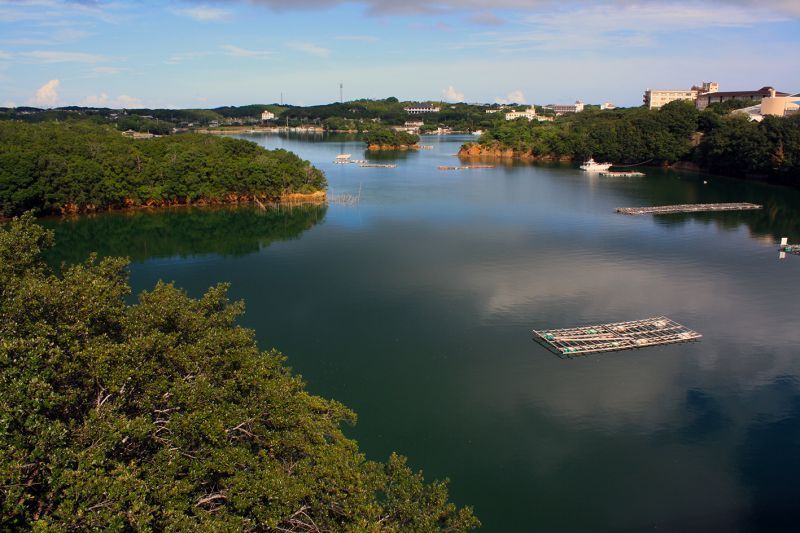
Caption: The calm waters in Ise-Shima are perfect for oyster farming.
After arriving at Kashikojima Station, it was clear that Shima city had a thriving pearl harvesting industry. The many jewellery shops and pearl-themed businesses in the area around the station created a quaint atmosphere that can only be found in places where people make their living from the sea. The Akoya oysters that are local to this area produce what many people consider to be the world’s most valuable cultured pearls.
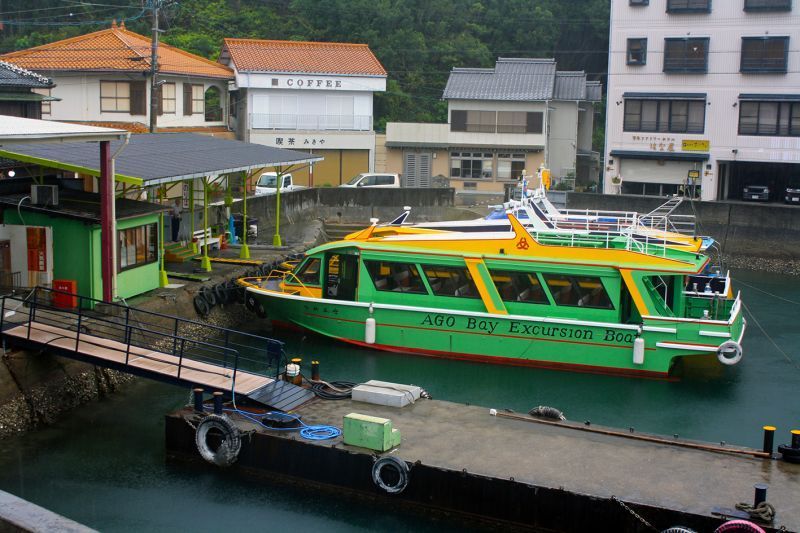
Caption: Many of the shops near Kashikojima Station are connected to the pearl industry.
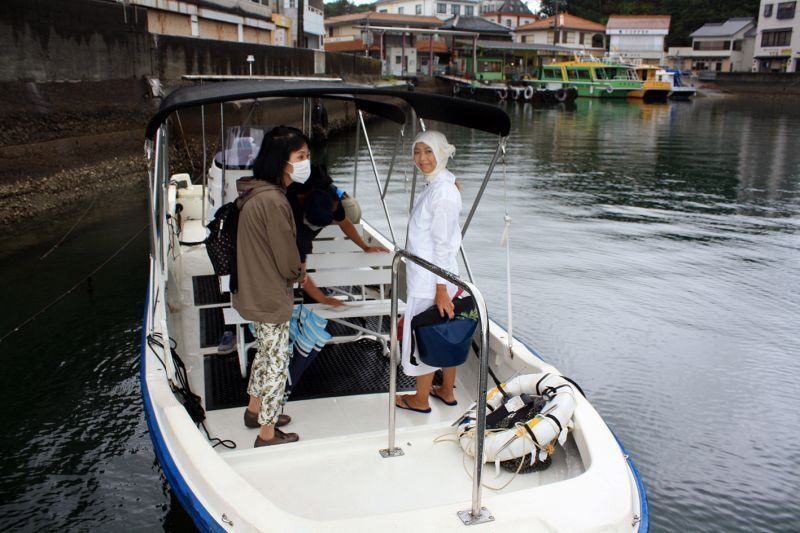
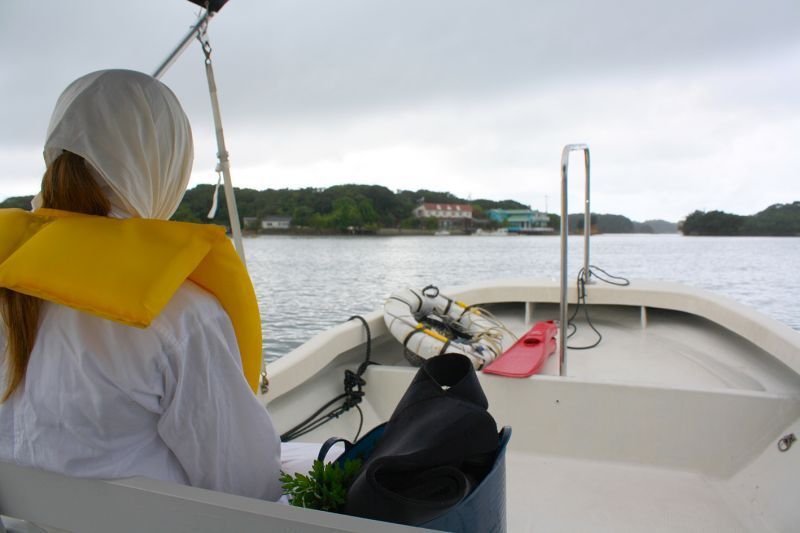
Caption: The boat tour was relaxing and informative.

